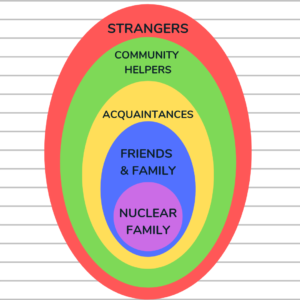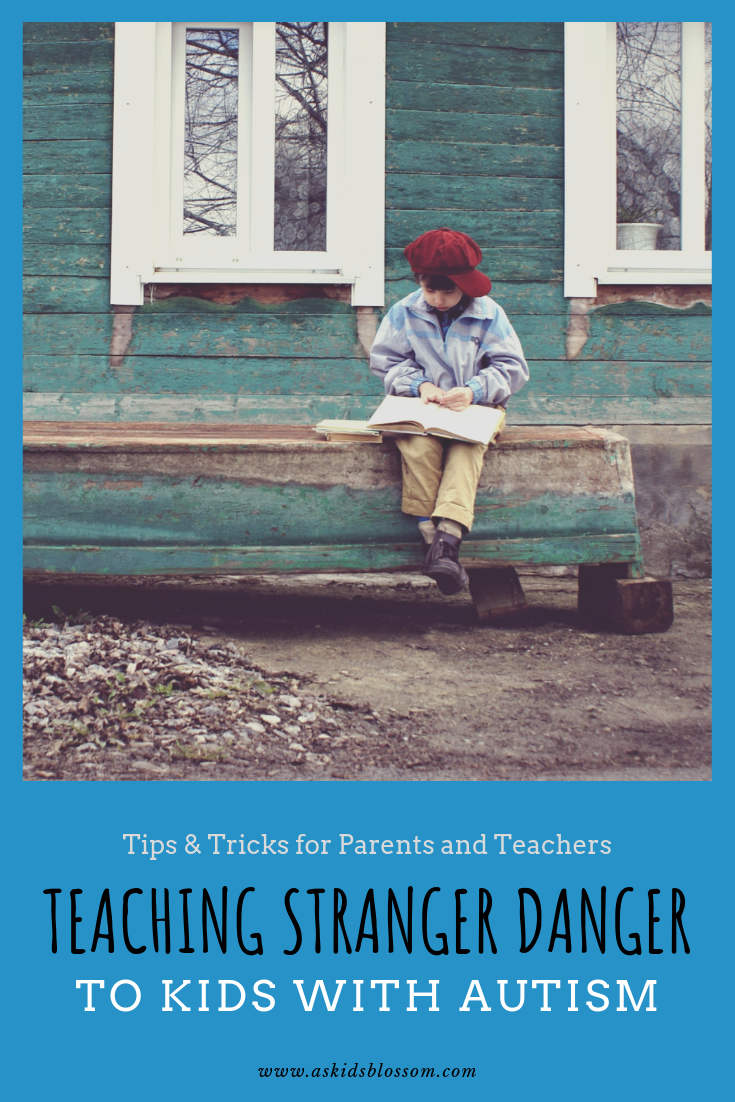When it comes to protecting our kids, stranger danger is one of the top concerns for parents around the world. Teaching stranger danger to kids with autism poses an extra challenge to parents and teachers because of the social and communication difficulties these kids face.
Children with developmental disabilities and autism are more prone to injuries as compared to other kids, and this includes any and all injuries from stranger danger.
Why Teach Stranger Danger to Kids with Autism?
It is important to teach stranger danger to every kid. As children, we remember our parents telling us now to get candy from a stranger, or not to go any place with a stranger. The danger was physical interaction only. Now, the danger has expanded into the virtual world also. Your child, even if they are not autistic, is exposed to stranger danger from more avenues now.
Kids with autism face their unique social and communicational challenges. It might take a little longer for them to understand the concept of stranger danger.
A child on the autism spectrum might not be able to process dangerous situations. He might not be able to tell when another person is lying or is trying to trick him. For them, everything is literal. So if a person offers them candy, it’s just candy.
Moreover, a child with autism is more prone to stranger danger as he is exposed to more people. This includes his therapists and doctors. All of these people might be interacting with him on a regular basis. He sees his parents looking up to these people for advice. So they blur the boundaries of strangers, creating an even bigger issue.
While it isn’t healthy to limit your child’s interaction with other people, you can teach stranger danger to kids with autism in a safe environment.
Teaching Stranger Danger to Kids with Autism
Here’s how you should be teaching stranger danger to kids with Autism:
Teaching Stranger Danger
Stranger danger isn’t something you can teach any child in just one day. It’s not a once in a lifetime conversation. It’s something you consistently do with your child.
When teaching stranger danger to kids with autism, define the relationship and how you are expected to interact with these relations.
Avoid using general terms. For instance, you cannot tell a child with autism to not to speak to strangers. You don’t want them refusing to speak to the cash counter sales person because you asked him not to speak to a stranger. We all speak to strangers. The idea is to explain to them who is safe and how isn’t.
When you sit down to talk to them, find out if they have gone through a situation that made them feel unsafe. You might want to offer your child stress relieving toy to hold onto when you have the talk.
Visual Representation
So the next step is how to identify safe stranger and creepy strangers. Here’s a simple chart to use when explaining how to interact with people:

The nuclear or the immediate family is the people your child can trust instinctively. Personal boundaries are the lowest with this group of people.
Next, are the family and friends. These include the class friend, the grandparents, aunts, and uncles.
The next group is acquaintances. These are the people you meet regularly. This group includes class fellows who aren’t friends, teachers, therapists, and doctors.
Community helpers come next. These would be security guards, cashiers, the waitress at your favorite restaurant etc.
Tell your child to steer clear of all the other people. They would be classified in the last category: Stranger and red for danger.
Color code all the people you meet with as an exercise to help your kids understand. Go over the roles of each circle.
Role Playing
With every child, role-playing gets you the best result. Go over how you would interact with each category. For instance, while it is okay to hug a friend, it’s not okay to hug a community helper or a complete stranger. But then, it’s not okay to let your friend touch your body parts while it might be okay to let your mother do it.
As the circle widens, physical interaction closes.
Think of places where your child might encounter stranger danger. Reenact these stories with your child to explain how they should react. Kids with autism don’t usually have the same responses as other kids. Therefore it is more important to go over different situations with them often when teaching stranger danger to kids with autism.
For instance, where to look for help when your child is lost. Your child should start with the closest circle and move on to the next if he can’t locate someone from the closet ones.
Understanding Signs
Kids with autism might be exceptional with receptive language but aren’t good at expressive language. They are unable to express and even understand their feelings. Even if you discuss with them to talk to you when they feel unsafe, they might not tell you because they don’t understand their own feelings.
Tell them to look for the following signs:
- Increased heart rate
- Stomach ache
- Wobbly knees
- Shaking arms
- Goosebumps
- Hair standing on the edge
- Breaking into a sweat
If they experience any of these signs when interacting with a person, tell them to let you know immediately.
Lay down specific rules
When it comes to autistic kids, you have to be very specific. Some rules could be:
- Do not let anyone touch your body parts except with your parent’s permission.
- When you feel unsafe, let your parents know as soon as you can in private.
- If you feel unsafe, tell the person No and seek help.
- Never to get in a car with a stranger, unless your parent is there.
- If you get lost, seek help from some a community helper or someone from the first three circles.
- Don’t keep a secret that makes you feel uncomfortable or unsafe.
If you liked reading Simple Everyday Tips for Picky Eaters for the Frustrated Moms, you might also like:
5 Tips to Boost Language Development in Kids with Down Syndrome
Sensory Hacks for Fidgety Kids
